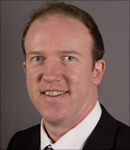With its rich natural resources and picturesque landscape reminiscent of Disney's Frozen, Iceland is a draw for industry establishments. In Iceland, 73 percent of the electricity is generated from hydropower plants and 27 percent from geothermal power plants. Its energy system is virtually 100 percent carbon dioxide neutral, but its complexity requires that the energy supply is under control from source of generation to point of consumption at all times to balance the load. For Reykjavik Energy, Iceland's largest utility, maintaining control of this delicate balance and managing the people working on its power system is fundamental to ensuring a safe and reliable power system for all of its customers.
Reykjavik Electricity, which was merged into Reykjavik Energy in 1999, began its operation in 1921. Its electricity distribution extends to more than half of the population of Iceland - approximately 182,000 inhabitants living in six municipalities in the capital area. Reykjavik Energy's grid system includes 13 substations and about 890 distribution stations; its distribution network consists mostly of underground cables.
Grid modernization and optimization is no new concept for Reykjavik Energy. It has been operating a computerized SCADA system since 1974. Prior to installing GE's Advantage Advanced Distribution Management System (ADMS), Reykjavik's previous SCADA platform dated back to 1996 and was delivered by CAE Electronics in Montreal. To further ensure the quality and reliability of the power it supplies to its customers and reduce operational costs, Reykjavik Energy has embarked on a project to upgrade its existing SCADA platform with GE's solution.
"Iceland is a forerunner country in modern energy production with virtually 100 percent of its electricity generated from renewable resources such as geothermal and hydro. Enjoying these high-quality power sources encouraged us to improve our distribution management system," said Runar Svavar Svavarson, technical manager of Reykjavik Energy's electrical systems. "With this new system, we can improve our control over our electricity grid and to provide our customers with the high-quality power they require in a cost-effective way."
The switch to the new enterprise ADMS will work to dramatically improve Reykjavik Energy's profitability, quality of service and customer satisfaction through both the addition of a comprehensive set of distribution applications and a completely modernized solution.
This system deployed by Reykjavik was developed to address top concerns surrounding global utility distribution and outage processes and is the result of direct collaboration between GE and utilities from around the globe. During the development process, feedback was gathered from customers to create a solution capable of meeting their needs and improving their operating experience.
The full-featured and integrated solution will provide Reykjavik Energy's distribution operators with exceptional workflow capability, intelligent prediction management and a next-generation user experience. Comprehensive work processes are seamlessly integrated between planned, unplanned and a broad array of optimization tasks. Platform modularity supports distribution and outage management processes and procedures, thereby improving operational efficiencies and communications in no matter what the weather outside looks like.
The ADMS provides Reykjavik's utility professionals with a unique and easy-to-use interface where data finds the user via a pre-defined dashboard with user-configurable widgets - a new paradigm in how data is collected and displayed. This custom dashboard becomes the center of attention for the user. It features user-specific modules that can be configured to present a wide array of information, provide customized alarms and link to other optimization applications. The system also features intuitive work pages that are designed for user-specific tasks. These pages provide all of the data tables, forms and diagrams needed on a daily basis. Through these guided work pages and streamlined and robust workflows, Reykjavik Energy's skilled team will be provided with advanced situational awareness and will be able to continuously access critical grid information, allowing the utility to proactively handle the challenges of its modern and dynamic distribution grid.
Mobile and other information technology (IT) use among Icelanders is among the world's highest. Thus, customers' expect utilities to be able to communicate efficiently and in a timely manner via those mediums when and if a disturbance occurs. The ADMS's communication module enables an integrated view of network voice, chat and video communications - both internally and externally. By interconnecting the ADMS solution with other IT systems, Reykjavik Energy can expand its communication capabilities, making it possible to keep customers informed of disturbances as they reveal themselves.
With the ADMS, Reykjavik Energy will now be able to continuously access critical grid information, advancing the functionality of its network and helping to modernize its grid. With this real-time data, it can instantaneously assess its network, pinpoint the location of a disruption and disperse well-informed restoration teams faster than ever before. This instantaneous availability of grid data also allows Reykjavik Energy to meet its customers' increased demand to access their individual usage information and stay in the loop if and when an outage does occur.
In addition, the solution replaces Reykjavik Energy's existing paper-and-pin wall with a new video wall, making it possible for operators to see the entire electrical network dynamically in real-time, in both schematic and geographical layouts. The overview provided on the video wall enables users to maintain perspective across their entire network and increase the situational awareness of their assets. The solution further improves the flow of information with end-to-end network model management processes and streamlined workflows. In addition, field crews will be able to access these graphical representations remotely using smartphones, tablets or laptops.
PowerOn Advantage has been designed from the customer's perspective to bring stakeholders together on a single platform enabling them to efficiently interact with the network, perform work and share information in real-time. One network model provides a single view of all work across the entire distribution network. This ability helps ensure that on-site field workers are viewing the same information as dispatch crews and grid operators, speeding up and simplifying outage restoration processes.
Safety and Simplification
The implementation of GE's ADMS also provides Reykjavik Energy with features that can improve the safety of its workers, something that the company values immensely. The ADMS ensures the highest level of network awareness during switching processes and other maintenance activities as well as strong mechanisms to ensure all stakeholders (including consumers) are aware of the network condition. The system provides Reykjavik Energy with an improved overview of its grid, allowing personnel to quickly assimilate information needed for particular tasks unique to their roles and needs. This heightened awareness equips both dispatchers and field crews with more accurate information on individual grid parts - thus making their work safer.
Another way the ADMS will streamline processes for Reykjavik Energy is its ability to make the creation of work orders faster and easier by proactively recommending the best solutions and working sequences based on advanced power flow calculations. Its pre-defined dashboard with user-configurable widgets provide greater situational awareness and streamlined, intuitive, guided work pages.
This technology also simplifies the process of creating outage reports. The new system automatically provides information including the number of customers without power and the duration of the outage. It also provides calculated values for the standard system reliability indices (SAIDI, SAIFI, etc.).
A utility's ability to control its network and manage the people working on its power system is fundamental to ensuring a safe and reliable power system for its customers and employees. With technology like GE's Advantage, grid operators can access real-time information to help keep the lights on for their customers, to prevent and rapidly respond to outages and to maximize their utility's return on network investment.
With the new system, Reykjavik Energy is able to increase the number of small remote terminal units in its distribution stations, providing improved control and fault indications. This gives dispatchers a better overview of the whole distribution grid, ultimately leading to shortened outage times.
With this implementation, Iceland, which was already a leader in the sector of modern electricity production and distribution, is now in even better position to meet evolving electrical challenges. GE's ADMS provides Reykjavik Energy with capabilities to help keep the lights on across the beautiful, scenic island of Iceland both today and in the future.
About the Author
 David (Dave) Daly is the product director responsible for Advanced Distribution Management Systems (ADMS) for Digital Energy's Asset Control product line.
David (Dave) Daly is the product director responsible for Advanced Distribution Management Systems (ADMS) for Digital Energy's Asset Control product line.
Dave has eighteen years of experience in utility control solutions, focused on distribution management. At GE, Dave has held various leadership roles across product management, engineering, project delivery and customer services. Prior to joining GE, Dave worked at ASCADA and IBM as a software engineer.
Dave holds a B.Eng in Electrical Engineering from the University of Glasgow, UK.








